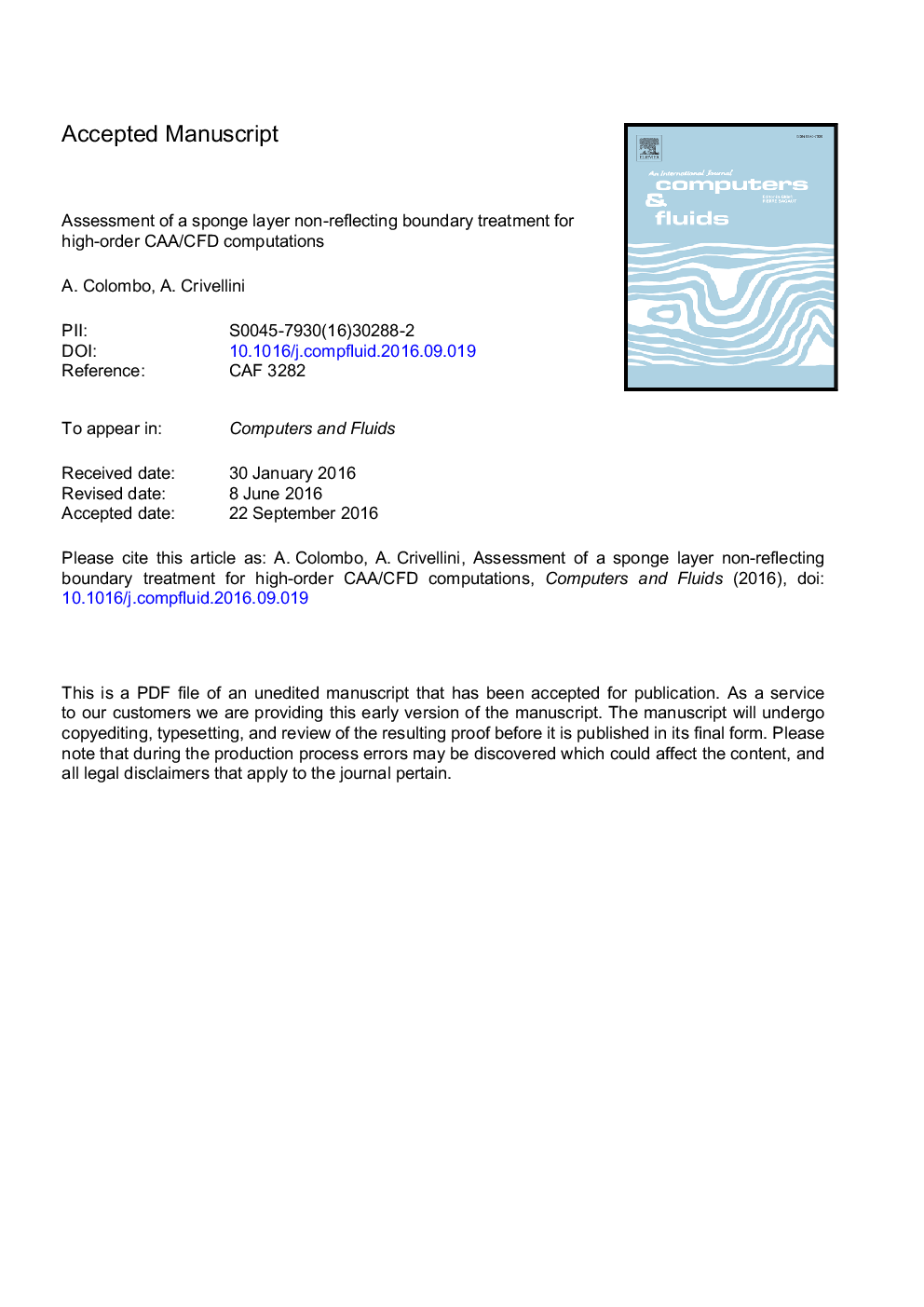| Article ID | Journal | Published Year | Pages | File Type |
|---|---|---|---|---|
| 5012067 | Computers & Fluids | 2016 | 46 Pages |
Abstract
In this work we carefully assess the effectiveness and flexibility of a sponge layer non-reflecting boundary treatment in the context of a very high-order space discretization by solving several different flow problems. We opted for this simple yet practical approach as it perfectly fits into an implicit accurate time discretization. A parametric study on the absorbing layer performance has been firstly performed on canonical computational aeroacoustics (CAA) test cases. These flow problems, modelled with the Linearized Euler Equations (LEE), suggested some guidelines for the choice of the sponge parameters. Thereafter we applied the same approach to other more complex flow models, i.e. the Navier-Stokes (N-S) and the Reynolds averaged Navier-Stokes (RANS) equations closed by the k-ÏË turbulence model. The results demonstrate that the use of a non-reflecting boundary treatment is mandatory for the correct prediction of some quantities and distributions, e.g. the sound directivity, otherwise spoiled by boundary conditions reflections. Finally, our numerical evidences suggest that the guidelines for the design of a near-optimal absorbing sponge layer, numerically obtained on LEE test cases, can be extended, with some confidence, to more complex flow models, i.e. N-S, RANS.
Related Topics
Physical Sciences and Engineering
Engineering
Computational Mechanics
Authors
A. Colombo, A. Crivellini,
